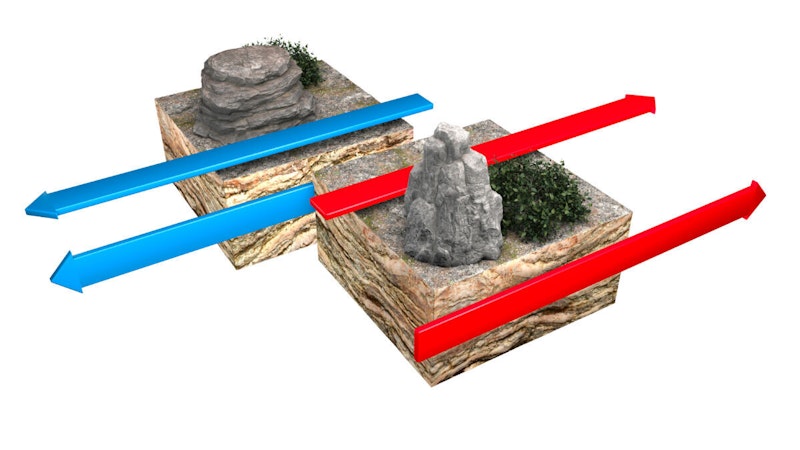Study Notes
GCSE Geography | Conservative Plate Margins (Tectonic Hazards 7)
- Level:
- GCSE
- Board:
- AQA, Edexcel, OCR, Eduqas
Last updated 17 Oct 2024
At a conservative plate margin two tectonic plates move side by side - this can either be in the opposite direction to one another, or can be in the same direction, but moving at different speeds.
At conservative margins there is no subduction taking place, meaning that no crust is melted to form magma and there is no gap between the plates to allow magma to rise anyway, so there is no volcanic activity and no new lithosphere forming.

However these margins are very active with destructive earthquakes. This is because the tectonic plates often get stuck as they slide past each other, which leads to a build up of pressure, which can be released as a powerful shallow earthquake, such as those found along the San Andreas Fault. This fault line is found along the margin between the North American and Pacific plates, and stretches over 1000km along the west coast of the USA, through California.
You might also like
Indonesian earthquake's death toll expected to rise significantly
30th September 2018
Daily Email Updates
Subscribe to our daily digest and get the day’s content delivered fresh to your inbox every morning at 7am.
Signup for emails